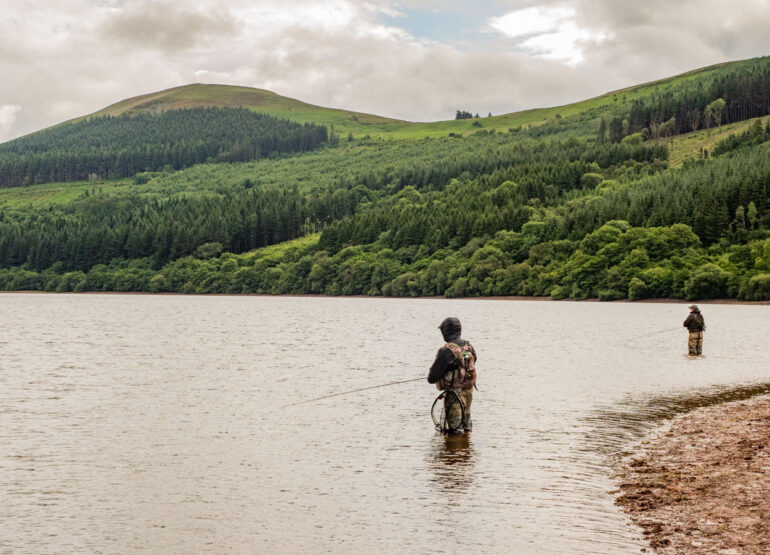
Lake fishing heaven – Brown trout in the Beacons
Ceri Thomas of Fishing In Wales writes about Tal-y-bont reservoir – the crown jewel of south Wales wild brown trout stillwaters, now available to Gwent AS members for the 2021 season.
Nestled in a glacial valley in the Brecon Beacons National park the 320 acre Tal-y-bont reservoir is home to a fantastic head of wild brownies and offers a real taste of wilderness fishing – but with easy access for anglers thanks to a road running along one side of the reservoir.
I’m of the opinion the water is one of the premier wild trout stillwaters in Wales, almost a Welsh ‘lough Corrib’. Its ‘top end’ shallows extend for many acres, providing rich feed for the trout. There are miles of uninterrupted bank with many varied features to hold fish, such as river channels, drop offs, rocky reefs and old fence posts.

The lake harbours some of the best looking wild brown trout you will ever see. They average a pound or so in weight, with two pounders fairly common and sometimes fish to twice that size. There is of course the local legend, of the Dutch tourist, who in ignorance cast a toby off the dam wall and landed a 14lb giant. Whilst this fish seems to get bigger with each telling, there is certainly room here to grow very large trout, with access restricted to bank fishing only – I was broken off last season by something that made the water churn like a flushing toilet that sheared through my 7lb leader like cotton.
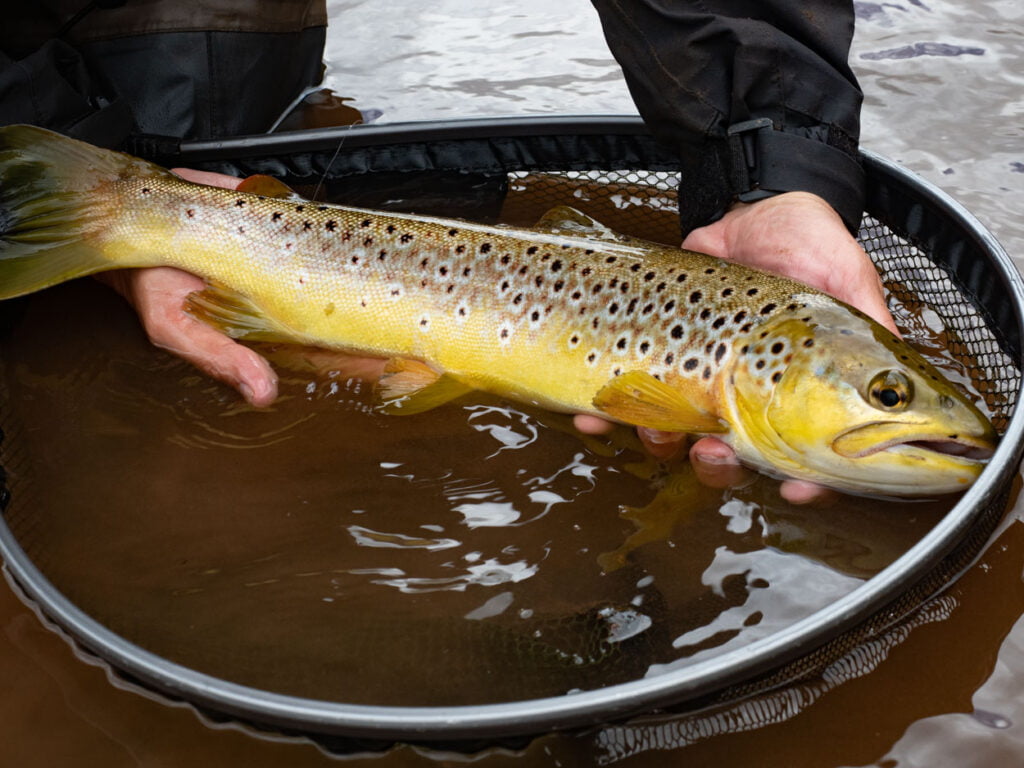
But it’s not just about size or sheer numbers of fish (which are prolific) it’s the whole experience, of simply being there in that fresh hill air. The fishing is complemented by the magnificent, towering forested valley sides, which are clothed in luxuriant shades of green. Red kites and other birds wheel above you as you cast your flies at rising trout, making Tal-y-bont a truly idyllic place to fish.
The lake lies on old red sandstone rock, very typical of the river Usk catchment. When the reservoir was created in the late 1930’s a small Usk tributary river, the Caerfanell, was dammed, flooding the narrow valley and creating this fine and fertile sheet of water. Its impoundment land-locked indigenous river Usk trout, also sea trout parr, which have since intermingled with various strains of stocked trout from past years, creating a bewildering variety of markings on the fish.
Any stocking finished well over a decade ago, and thanks to day ticket C&R rules and conservation minded anglers the lake has gone from strength to strength over the past few years, with the fishing as good as I’ve known it.
Fishing Tal-y-bont through the seasons
Spring – March, April, May
Tal-y-bont’s 622 feet elevation means spring arrives here just a little earlier than other upland lakes in Wales. Unlike some other Brecon Beacons reservoirs Tal-y-bont has extensive areas of shallow water, which warm up quickly ensuring it fishes well from day one on March 20th. It’s a great place to enjoy some early season bank fishing while other places are still waking up from winters chill or to fish whilst the nearby rivers are in spate.
Fish can usually be caught all day long during the spring months in almost all weather conditions. A good hatch of black buzzer often occurs on mild, calm days in March and April, and the trout will rise well. Lake olives come off in April and early May, while caenis and even the odd danica mayfly are known late spring hatches. All of these will bring trout up to the surface if conditions are right.
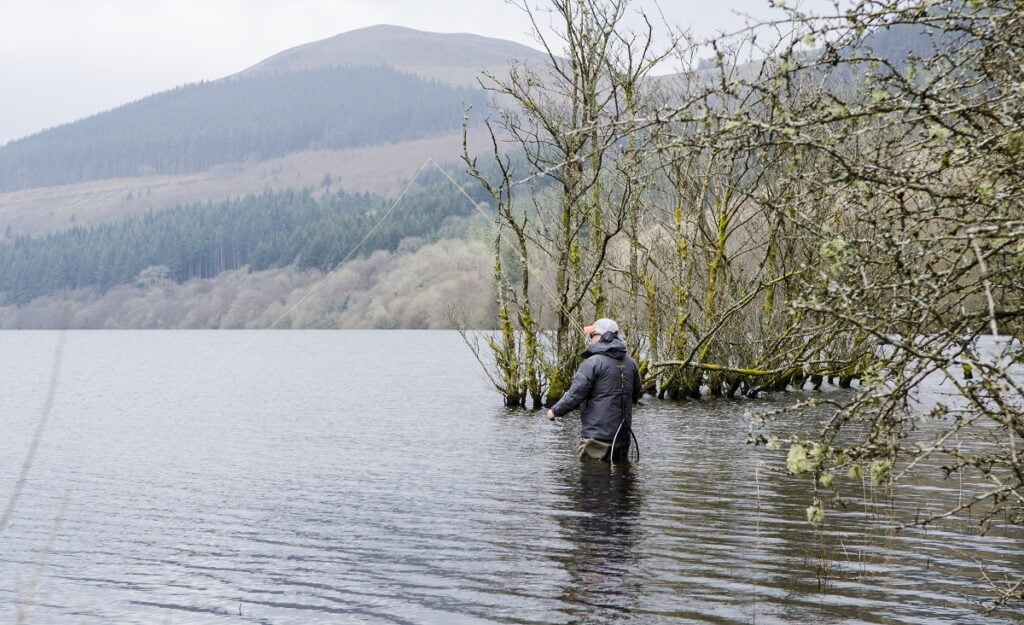
For the most part though Tal-y-bont trout are bottom feeders, grubbing around for cased caddis and snails off the rocks close to shore. Therefore, on dour, cold spring days it pays to fish deep and slow with a long leader and a weighted nymph or small black lure. Other food items include shoals of minnows, along with sticklebacks, horse leeches, damsel nymphs and bullheads. All of which make a varied, protein rich food source for the fish.
Summer – June, July, August
During the summer months trout feeding activity switches almost exclusively to late evening. It really pays to begin fishing around 7pm to 8pm and then fish into the dusk, when the reservoir can suddenly become alive with rising fish. Late evening summer hatches include sedge and caenis. Anglers fishing in the day-time in bright and hot conditions will seriously struggle and may end up convinced there are no fish in the water.
Early morning summer starts are also well worth considering. I have had success on early mornings and have often encountered good sized feeding fish in the shallows. It’s a short window of activity but worth getting up for. The fish retreat to deeper water as soon as the sun rises above the valley sides.
June can be an excellent month early and late, but generally July and August dog day summer fishing is not the best time on Tal-y-bont, the exception being if there is a spell of wet and windy weather. Although unpleasant these conditions will bring the better fish out during the day-time; and can often provide a bumper days fishing if you dare to brave.
Please note in prolonged spells of very warm weather argulus lice can affect the trout (as they do on the lower/middle river Usk) so be mindful of this and take care to clean and wash your tackle afterwards.
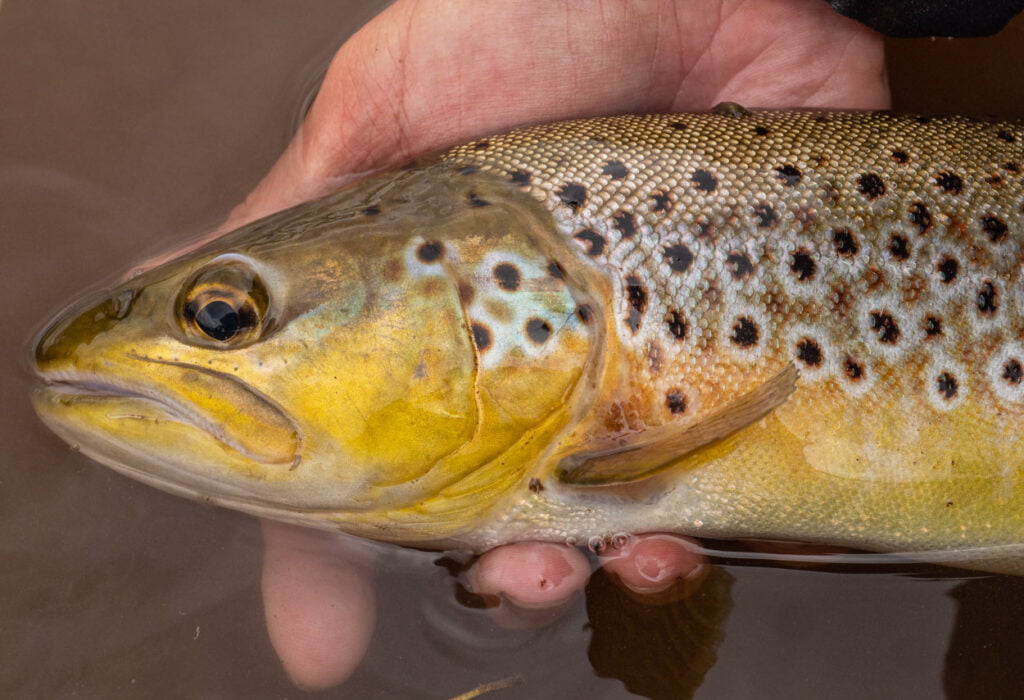
Autumn – September, October
My favourite time of year for fishing the reservoir. Tal-y-bont fishes well late on, and often right up to the last day of the season on October 17th. This provides a prolonged fishing season when the rivers are closed. As the water cools the fish begin to heavily feed all day and often turn their attention to sticklebacks and minnows in the marginal weed beds. Therefore, a flashy wet fly imitating a small fry can work well, as can small streamer patterns.
Dry fly fishing can be excellent at this time of year also, with heavy falls of daddy long legs and terrestrial insects right to the seasons end. Sedge can also be prevalent.
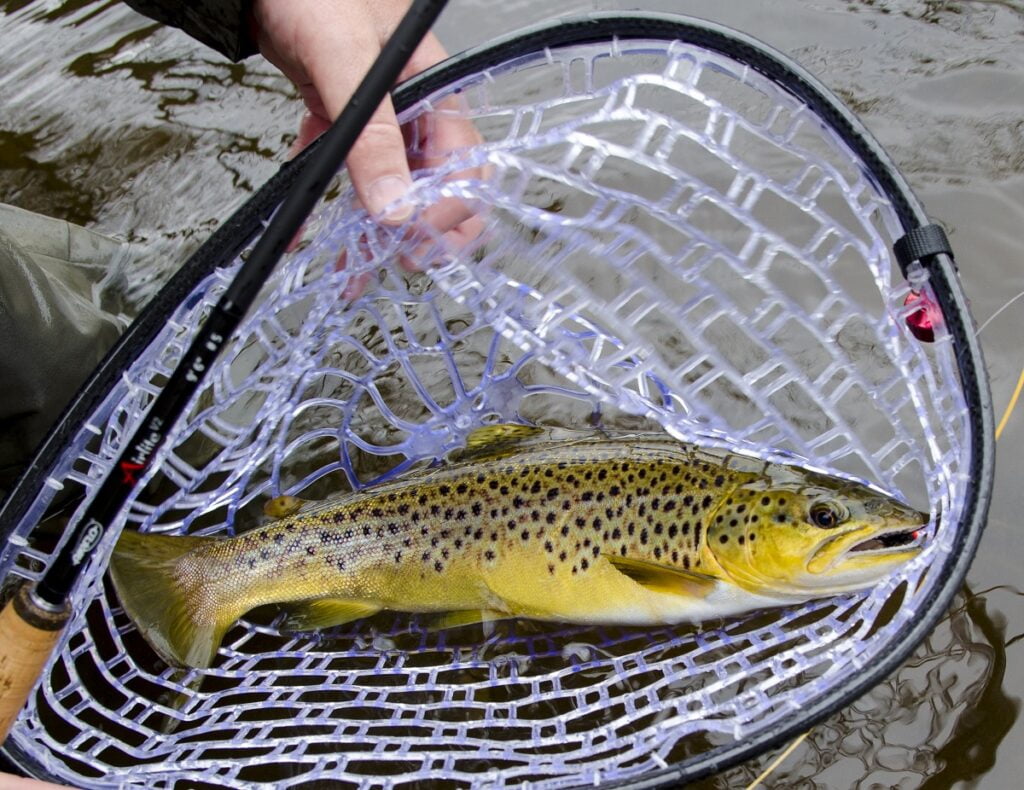
Tal-y-bont Tackle:
9 foot to 10 foot fly fishing rods in #5, #6 or #7 weight will be required. Optimum outfit must be a 10’ #6. For fly lines a floater is generally all you need, or with an intermediate sink tip for cold or rough weather. Fluorocarbon tippet material of 5lb to 7lb is recommended. Use of a tapered floating or intermediate polyleader is also advisable, to give a total leader length with tippet of 18 to 20 foot.
Waders will be very useful in thigh or chest. Much of the reservoir can be waded – but I must stress extreme care needs to be taken if you do not know the lake. Drop off’s and old river channels are numerous and can be dangerous, especially at the top end of the lake where the main river comes in. Most of the roadside bank is safe wading, but there are still gullies and stream beds to look out for in places.
Flies for Tal-y-bont
Subsurface patterns:
Butcher, Silver Invicta, Pearly Bibio, Blue zulu, Coch-y-bonddu, Peter Ross, Black Pennell, Red tag, Black & peacock spider, black woolly bugger, Montana nymph, black buzzer, diawl bach.
Dry flies:
Shipman’s buzzer, CDC shuttlecock buzzer, Black klinkhammer, foam beetle, Bibio hopper, foam body daddy long legs, CDC olive dun, G&H sedge, Caenis spinner.
Tal-y-bont tip: Keep moving!
Always keep moving, never lingering in one area too long. Step and cast is a traditional way to fish wild Welsh lakes and it really works here. Whilst covering new ground, fan cast every likely looking spot and do not ignore very shallow water at your feet. Far too many anglers fish static for wild trout, you must go and find the fish since they are territorial in nature and can be very localised. On Tal-y-bont, like so many other wild trout lakes, fishing over fresh water can really pay off.
Fishing Fact file
Fly fishing is the only permitted method. Season runs March 20th to October 17th.
The reservoir can be fished by full members of Gwent Angling Society. Catch and Release only. Please note the water is also shared with Merthyr Tydfil Angling Alliance members and The Fishing Passport.
The water is regularly patrolled by Welsh Water bailiffs and volunteer bailiffs from the local angling clubs.
Suspected poaching incidents should be reported to the Welsh Water ranger unit on 01685 370771 and NRW on 0300 065 3000
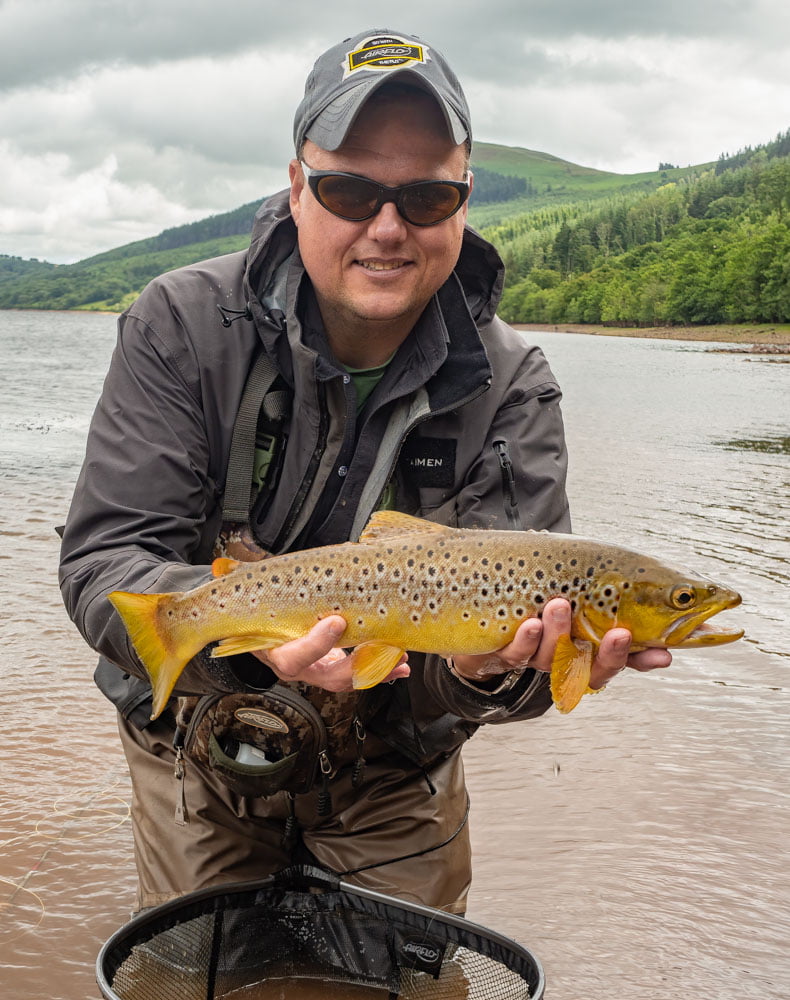
WHY NOT JOIN US?
The Gwent Angling Society is a progressive, conservation-minded club offering fishing on six beats on the River Usk, two on the River Wye, the Sirhowy river and Afon Llynfi (Powys), and the wonderful Talybont Reservoir. Our waters can be viewed here. If you are interested in joining us or have any queries, simply contact our Membership Secretary.


